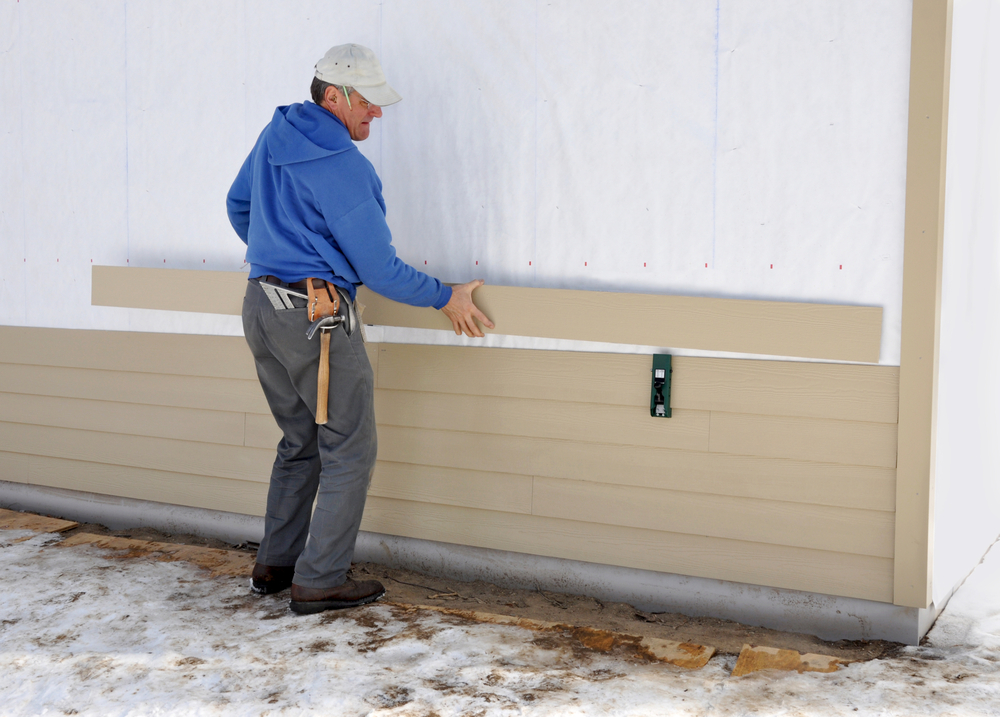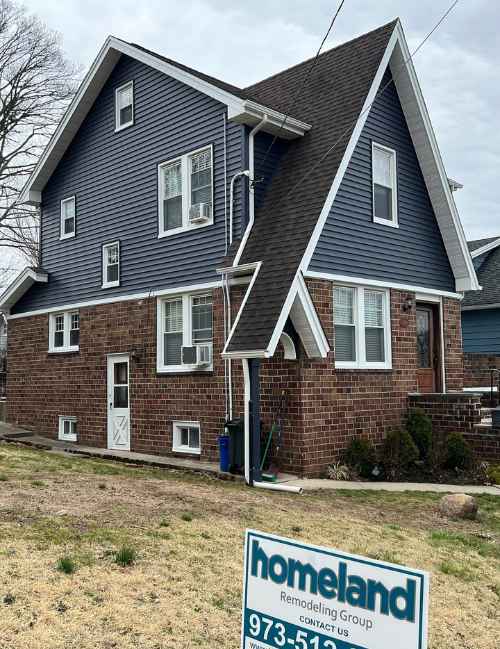Top-Rated Morris Siding Contractor Offering Expert Installation Services
Top-Rated Morris Siding Contractor Offering Expert Installation Services
Blog Article
The Essential Overview to the Various Types of Siding and Their Unique Advantages
In the world of home enhancement, choosing the ideal house siding is a critical choice that influences both visual charm and practical performance. With so numerous choices to think about, which house siding material really stands out for your particular project?
Wood Siding
Wood house siding, a preferred selection for property outsides, supplies a classic visual that integrates natural elegance with architectural honesty. This siding product is readily available in different styles, consisting of clapboard, tiles, and board-and-batten, enabling homeowners to tailor their appearance to match their style preferences. Timber exterior siding is normally crafted from long lasting types such as cedar, redwood, or yearn, which are known for their strength and ability to hold up against ecological stressors.
Among the main benefits of timber exterior siding is its superb insulation buildings, which can add to power efficiency and reduced heating costs. Furthermore, timber siding is eco-friendly, making it an eco friendly option when sourced sustainably. Normal maintenance, including painting or discoloration, can extend its life-span and boost its appearance, enabling property owners to maintain the natural appeal of the timber.
However, possible drawbacks consist of sensitivity to insects, rot, and climate damage, demanding sufficient therapy and upkeep - morris siding contractor. Despite these worries, when properly looked after, wood siding can offer a beautiful and long lasting solution that improves the personality of a home while supplying a warm, inviting ambience

Plastic Siding
Plastic home siding has actually become a leading choice for home owners looking for a low-maintenance exterior alternative that integrates sturdiness and cost. This versatile product is crafted from polyvinyl chloride (PVC), making it resistant to numerous weather problems, including dampness and UV rays. Because of this, vinyl house siding does not warp, rot, or fade, ensuring resilient visual charm.
One of the key benefits of plastic exterior siding is its extensive series of designs and colors, permitting house owners to attain the preferred appearance for their building without the requirement for constant repainting. Furthermore, plastic siding is simple to mount, which can substantially lower labor expenses throughout building and construction or remodelling tasks.
Vinyl exterior siding likewise contributes to energy effectiveness. Several options feature insulation support, which boosts thermal performance, helping to preserve comfy interior temperature levels and possibly lowering energy bills. In addition, its smooth surface area facilitates simple cleaning, needing just routine washing with a garden hose pipe to eliminate dirt and debris.
Fiber Cement Exterior Siding
Fiber cement exterior siding has obtained traction among building contractors and home owners alike because of its exceptional mix of longevity and visual convenience. Made up of a mix of sand, cement, and cellulose fibers, this siding alternative is crafted to stand up to severe climate condition, including high winds, hefty rainfall, and temperature fluctuations, making it a lasting choice for residential outsides.

Among the primary advantages of fiber cement siding is its resistance to parasites, such as termites, and its non-combustible nature, offering improved fire safety and security. morris siding contractor. websites Furthermore, it is available in a large array of structures, shades, and styles, allowing home owners to achieve their preferred visual without compromising efficiency
Another advantage is its reduced maintenance needs; fiber concrete exterior siding typically needs paint or staining every 5-10 years, which is much less regular than various other products. Additionally, its long life adds to a lower overall cost of ownership, as it reduces the demand for constant repair services or substitutes.
Inevitably, fiber cement home siding represents an outstanding investment for those seeking a durable, appealing, and flexible outside choice, incorporating both kind and function to boost the home's aesthetic allure.
Steel House Siding
The attraction of steel house siding exists in its durable resilience and contemporary aesthetic appeal, making it a favored choice for contemporary architecture. Available in materials such as light weight aluminum and steel, steel house siding supplies an array of finishes Web Site and shades, allowing property owners to achieve a customized look that matches their style vision.

Power effectiveness is an additional substantial advantage, as several steel house siding items are designed with insulation options that help regulate interior temperature levels. This can lead to decreased energy costs over time. Additionally, metal siding is typically recyclable, making it an eco-friendly option for sustainability-minded house owners.
The setup process for metal siding can be reasonably simple, leading to a quicker turnaround time for construction projects. Overall, steel home siding integrates functionality and style, making it a practical alternative for those looking for a aesthetically appealing and enduring outside finish.
Brick and Stone Siding
Block and stone siding stands out as an ageless option that enhances the aesthetic appeal of any type of home. Known for their resilience and low maintenance, these materials offer an extraordinary return on investment while elevating the property's aesthetic appeal. Readily available in different shades, structures, and patterns, brick and stone can be customized to fit varied building styles, from typical to contemporary.
Among the key advantages of block and stone house siding is their energy effectiveness. Both products possess natural protecting homes that help control interior temperatures, potentially minimizing cooling and heating expenses. Furthermore, they supply exceptional fire resistance contrasted to various other siding options, contributing to improved safety and security.
Another benefit is their durability. Block and rock can last for years, often requiring minimal upkeep beyond occasional cleaning. Unlike timber have a peek at this website siding, they are invulnerable to bugs and rot, making sure a durable outside that withstands the elements.
Verdict
In summary, the choice of siding dramatically affects a home's visual allure, energy efficiency, and upkeep requirements. Each kind of exterior siding-- whether wood, vinyl, fiber metal, block, or cement and stone-- supplies special benefits customized to various homeowner choices and ecological conditions.
One of the key benefits of wood siding is its superb insulation residential or commercial properties, which can add to energy effectiveness and reduced heating expenses. Furthermore, timber exterior siding is eco-friendly, making it an environmentally friendly alternative when sourced sustainably.One of the primary benefits of steel house siding is its resistance to numerous environmental elements.Power performance is another considerable benefit, as many metal house siding products are designed with insulation alternatives that assist control interior temperature levels. Each type of exterior siding-- whether wood, vinyl, fiber concrete, metal, or brick and rock-- uses unique benefits tailored to different house owner choices and ecological problems.
Report this page